I was Sad to learn that Her Majesty Queen Elizabeth II tragically died at Balmoral on 8 September 2022. She was born 21st April 1926. She is the constitutional monarch of 16 sovereign states known as the Commonwealth realms, and head of the 54-member Commonwealth of Nations. In her specific role as the monarch of the UnitedKingdom, one of her 16 realms, she is also Supreme Governor of the Church of England. Elizabeth was born in London, and educated privately at home. Her father acceded to the throne as George VI in 1936 on the abdication of his brother Edward VIII and She began to undertake public duties during the Second World War, and also served in the Auxiliary Territorial Service. On the death of her father in 1952, she became Head of the Commonwealth and queen regnant of seven independent Commonwealth countries: the United Kingdom, Canada, Australia, New Zealand, South Africa, Pakistan, and Ceylon (Sri Lanka). Her coronation service in 1953 was the first to be televised. Between 1956 and 1992, many territories gained independence or became republics. Today, Elizabeth is Queen of Jamaica,Barbados, the Bahamas, Grenada, Papua New Guinea, the Solomon Islands, Tuvalu, Saint Lucia, Saint Vincent and the Grenadines, Belize, Antigua and Barbuda, and Saint Kitts and Nevis. In 1947 she married Prince Philip, Duke of Edinburgh, with whom she has four children: Charles, Anne, Andrew, and Edward. Her Silver and Golden Jubilees were celebrated in 1977 and 2002; her Diamond Jubilee was celebrated 2012 and Platinum Jubilee is celebrated 2022
Elizabeth was the first child of Prince Albert, Duke of York (later King George VI), and his wife, Elizabeth. Her father was the second son of King George V and Queen Mary, and her mother was the youngest daughter of Scottish aristocrat Claude Bowes-Lyon, 14th Earl of Strathmore and Kinghorne. Elizabeth’s only sibling was Princess Margaret, born in 1930. As a granddaughter of the monarch in the male line, Elizabeth’s full style at birth was Her Royal Highness Princess Elizabeth of York. She was third in the line of succession to the throne, behind her uncle, Edward, Prince of Wales, and her father. In 1936, when her grandfather, George V, died and her uncle Edward succeeded, she became second in line to the throne after her father. Later that year, Edward abdicated after his proposed marriage to divorced socialite Wallis Simpson provoked a constitutional crisis. Elizabeth’s father became king, and she became heiress presumptive, with the style Her Royal Highness The Princess Elizabeth. In 1943, at the age of 16, Elizabeth undertook her first solo public appearance on a visit to the Grenadier Guards, of which she had been appointed Colonel-in-Chief the previous year. As she approached her 18th birthday, the law was changed so that she could act as one of five Counsellors of State in the event of her father’s incapacity or absence abroad,
At the end of World war II in Europe, on Victory in Europe Day, Elizabeth and her sister mingled anonymously with the celebratory crowds in the streets of London. She later said in a rare interview, “we asked my parents if we could go out and see for ourselves. I remember we were terrified of being recognised … I remember lines of unknown people linking arms and walking down Whitehall, all of us just swept along on a tide of happiness and relief.”Two years later, the princess made her first overseas tour, when she accompanied her parents through southern Africa. During the tour, in a broadcast to the British Commonwealth on her 21st birthday, she pledged: “I declare before you all that my whole life, whether it be long or short, shall be devoted to your service and the service of our great imperial family to which we all belong.”
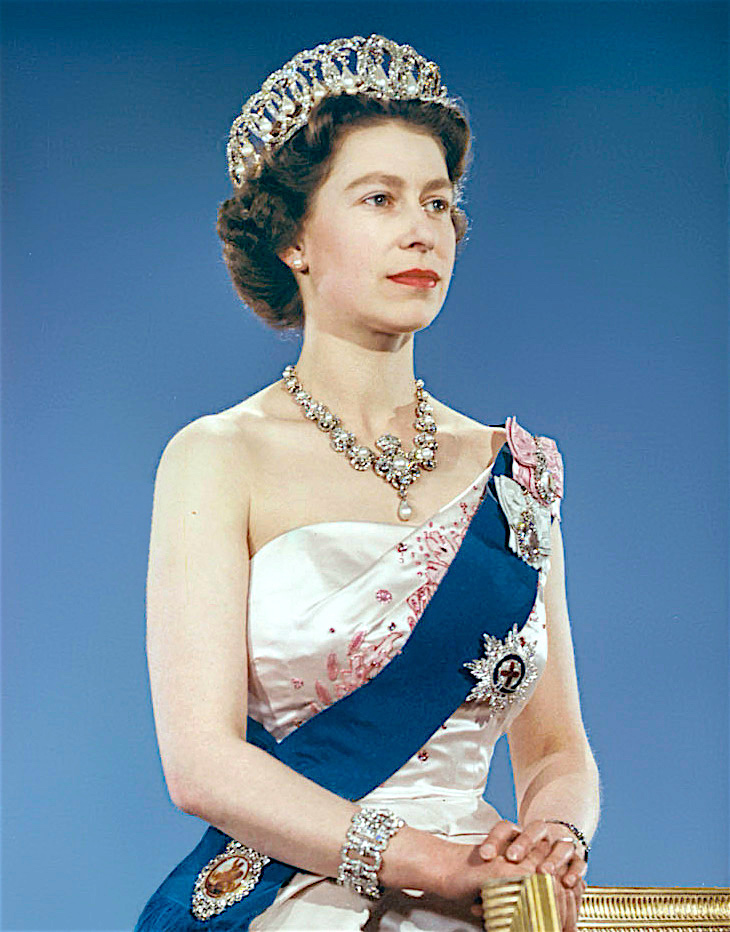
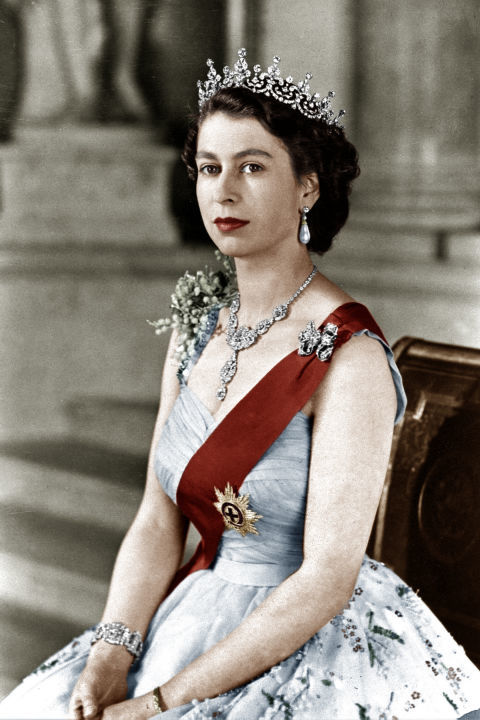
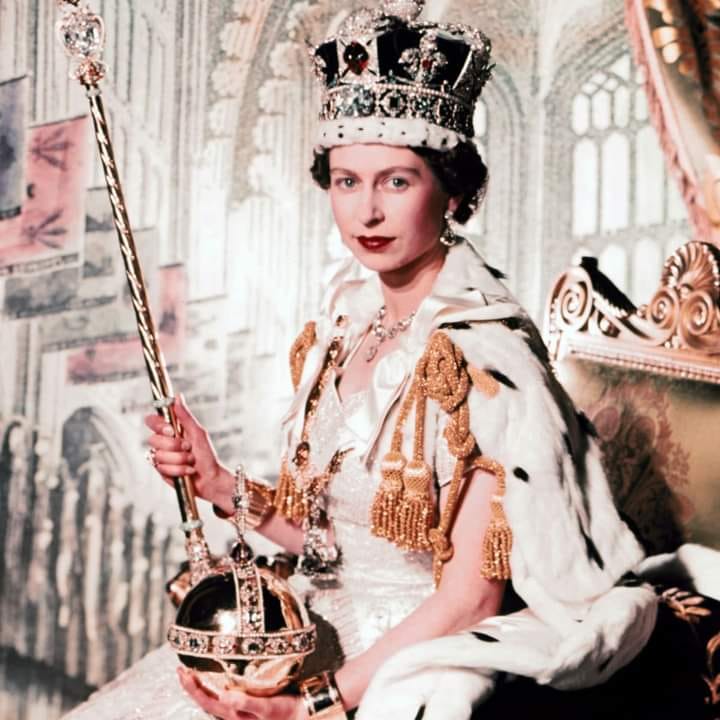
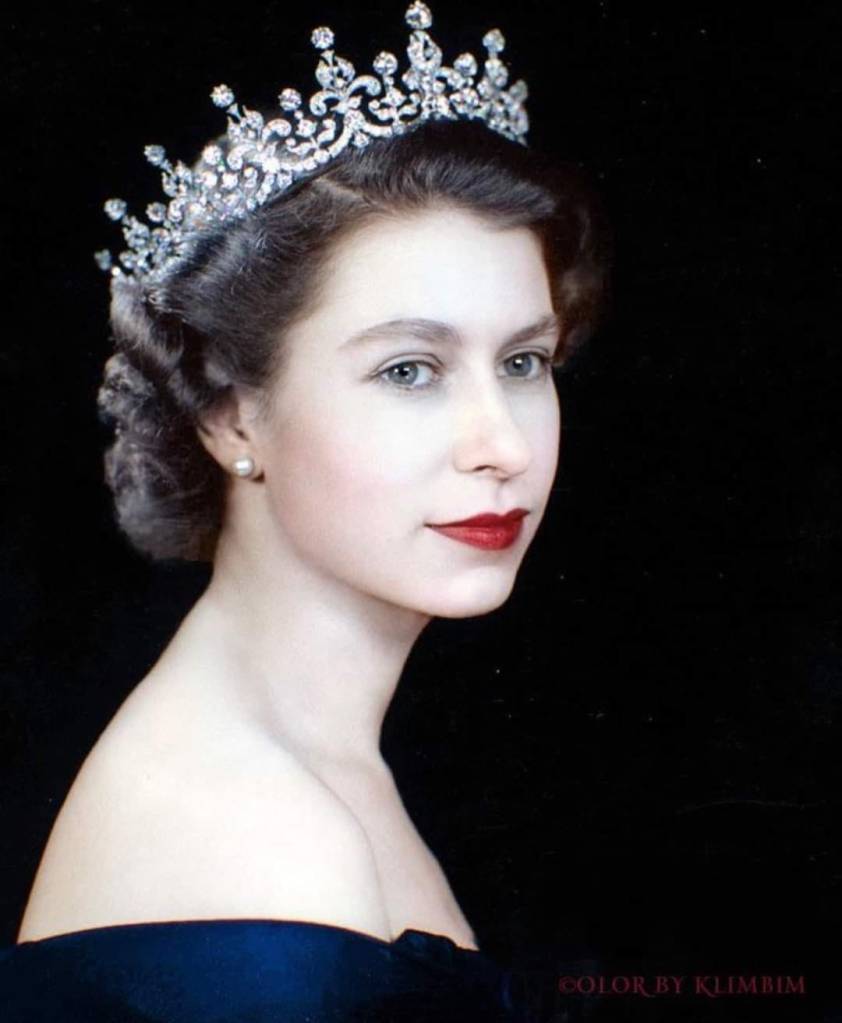
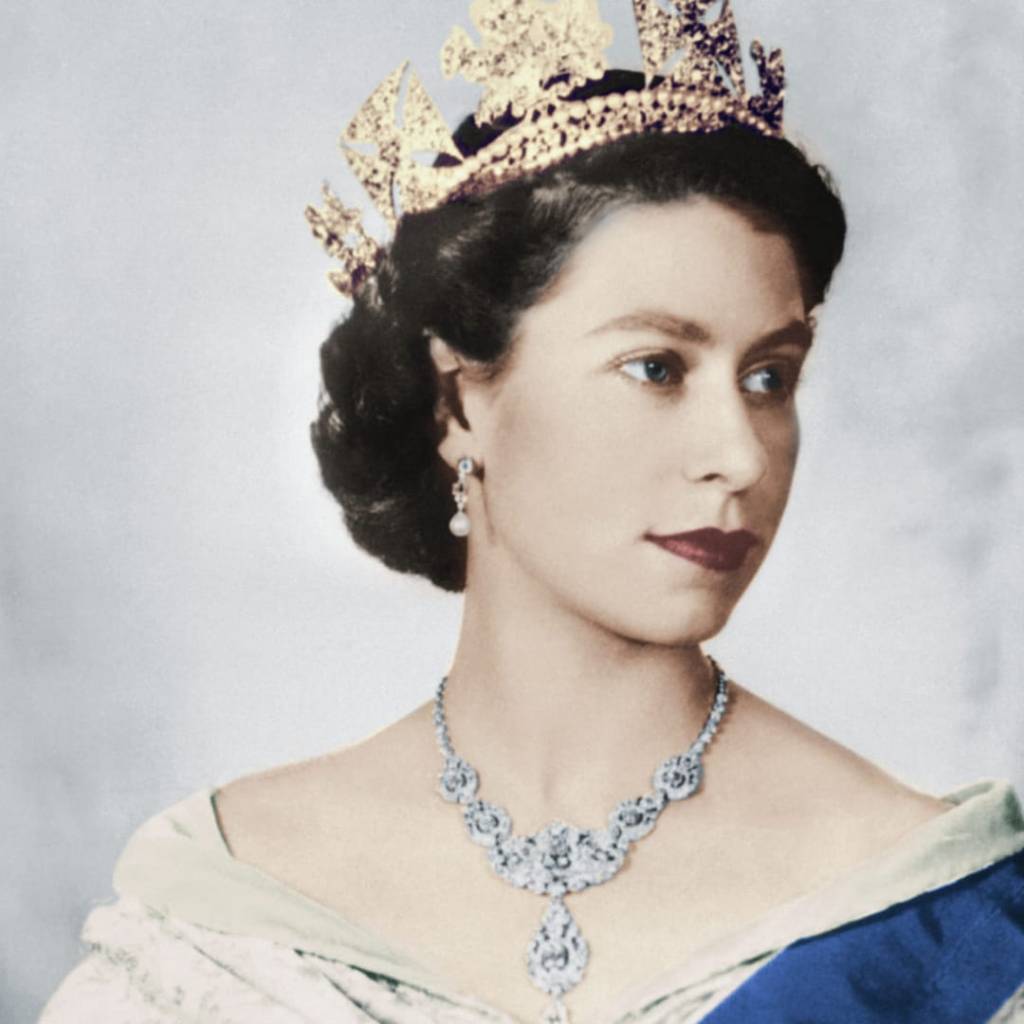
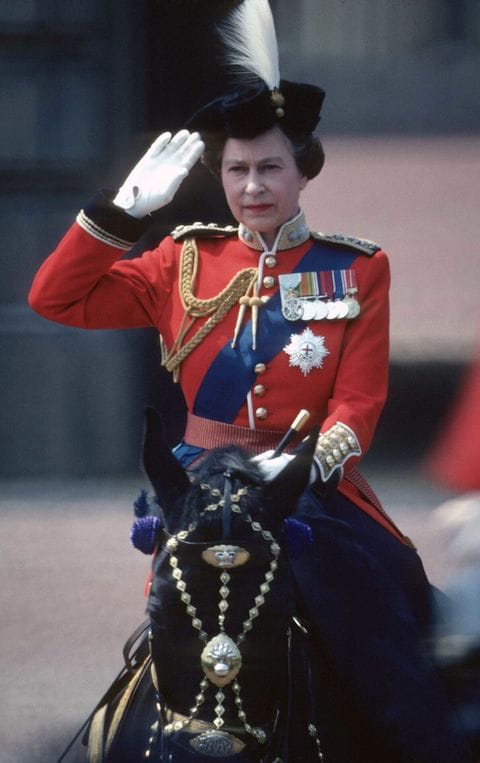
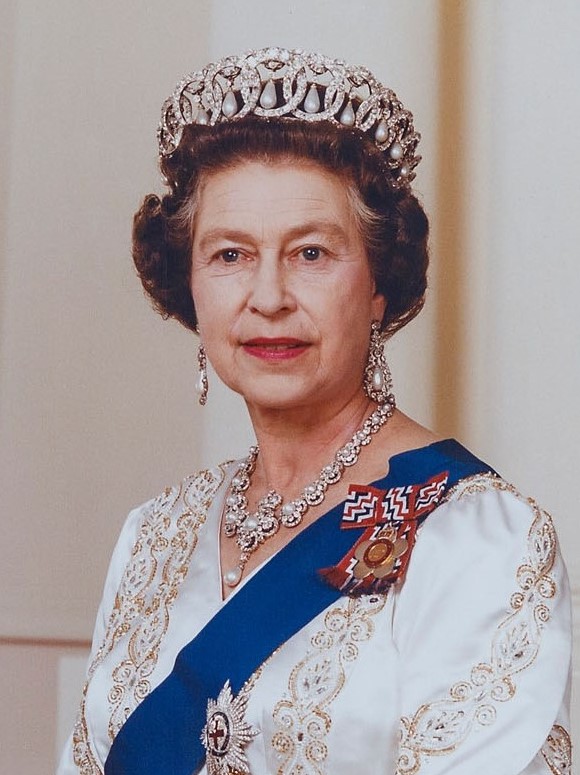
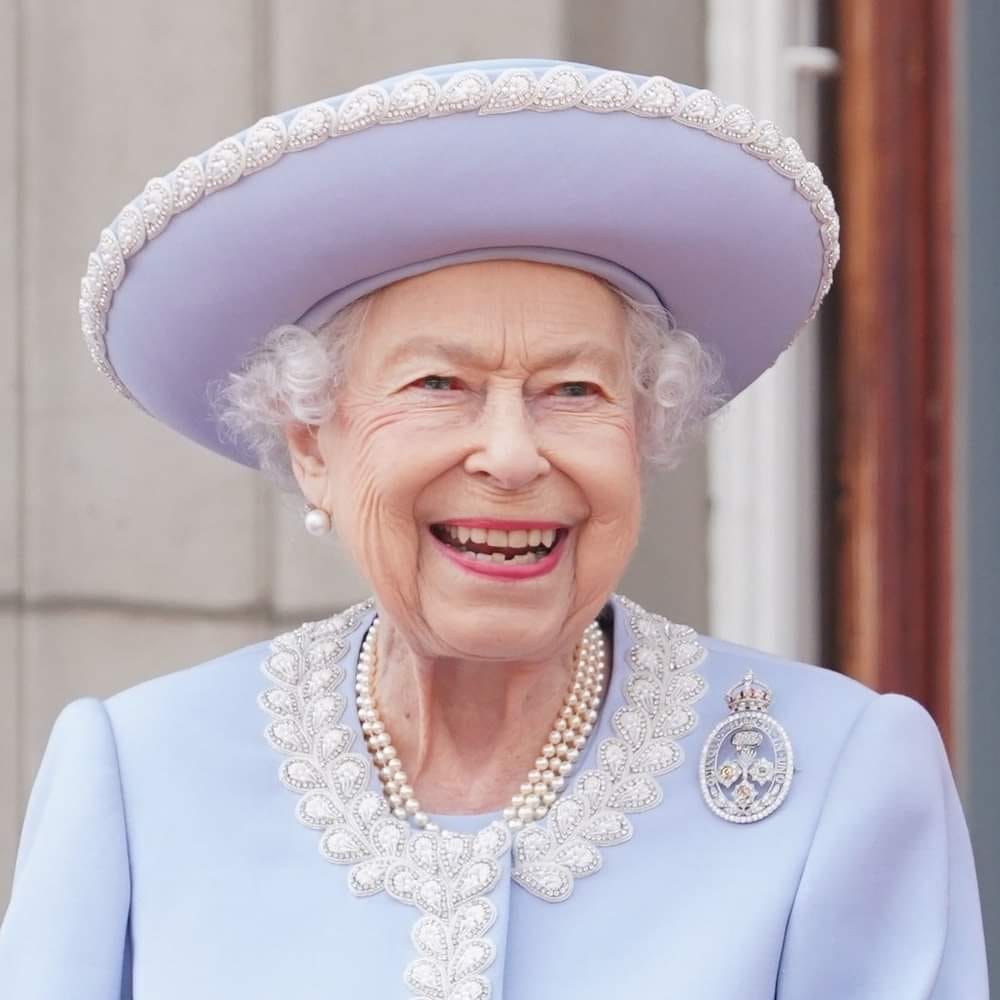
Elizabeth met her future husband, Prince Philip of Greece and Denmark, in 1934 and 1937. After another meeting at the Royal Naval College in Dartmouth in July 1939, Elizabeth – though only 13 years old – fell in love with Philip, and they began to exchange letters. They married on 20 November 1947 at Westminster Abbey. They are second cousins once removed through King Christian IX of Denmark and third cousins through Queen Victoria. Before the marriage, Philip renounced his Greek and Danish titles, converted from Greek Orthodoxy to Anglicanism, and adopted the style Lieutenant Philip Mountbatten, taking the surname of his mother’s British family. Just before the wedding, he was created Duke of Edinburgh and granted the style of His Royal Highness. Elizabeth gave birth to her first child, Prince Charles, on 14 November 1948, A second child, Princess Anne, was born in 1950, Princes Andrew was born in in 1959 and Edward in 1963.
Durind 1952 her Father King George VI’s health unfortunately declined, and Elizabeth was soon frequently standing in for him at public events. In October of that year, she toured Canada, and visited President Truman in Washington, D.C. And on the trip, her private secretary, Martin Charteris, carried a draft accession declaration for use if the King died while she was on tour. In early 1952, Elizabeth and Philip set out for a tour of Australia and New Zealand by way of Kenya. On 6 February 1952, they had just returned to their Kenyan home, Sagana Lodge, after a night spent at Treetops Hotel, when word arrived of the death of Elizabeth’s father. Philip broke the news to the new queen. Martin Charteris asked her to choose a regal name; she chose to remain Elizabeth, “of course”. She was proclaimed queen throughout her realms, and the royal party hastily returned to the United Kingdom. She and the Duke of Edinburgh moved into Buckingham Palace. With Elizabeth’s accession it seemed likely that the royal house would bear her husband’s name. Lord Mountbatten thought it would be the House of Mountbatten, as Elizabeth would typically have taken Philip’s last name on marriage; however Elizabeth’s grandmother Queen Mary and British Prime Minister Winston Churchill favoured the retention of the House of Windsor, and so Windsor it remained.
Queen Mary sadly died 24 March 1953 and The coronation of Elizabeth II took place in Westminster Abbey,on 2 June 1953 except the anointing and communion, and was televised for the first time, and the coverage was instrumental in boosting the medium’s popularity; the number of television licences in the United Kingdom doubled to 3 million. Elizabeth’s pregnancies with Princes Andrew and Edward in 1959 and 1963, respectively, mark the only times she has not performed the State Opening of the British parliament during her reign. In addition to performing traditional ceremonies, she also instituted new practices such as the Royal Walkabout.
Her first royal walkabout, meeting ordinary members of the public, took place during a tour of Australia and New Zealand in 1970. In 1977, Elizabeth marked the Silver Jubilee of her accession. Many street parties and other events were held to mark the occasion (I used to have a commemorative mug) Many of which coincided with the Queens Associated National and Commonwealth tours and These celebrations re-affirmed the Queen’s ongoing popularity She again undertook an extensive tour of her realms, which began in Jamaica in February, As in 1977, there were many street parties and commemorative events, and monuments bult to honour the occasion. A million people attended each day of the three-day main Jubilee celebration in London, and the enthusiasm shown by the public for Elizabeth again re-affirmed her ongoing popularity.
In 2002, Elizabeth marked her Golden Jubilee as queen. Sadly though both Her sister Princess Margaret and mother died in February and March 2002. On 20 March 2008 the Queen also attended the first Maundy service held outside of England and Wales -t the Church of Ireland St Patrick’s Cathedral, Armagh, at the invitation of Irish President Mary McAleese, in May 2011 the Queen made the first state visit to the Republic of Ireland by a British monarch. Elizabeth addressed the United Nations for a second time in 2010, again in her capacity as queen of all her realms and Head of the Commonwealth. UN Secretary General Ban Ki-moon introduced her as “an anchor for our age”. During her visit to New York, which followed a tour of Canada, she officially opened a memorial garden n remembrance of the British victims who pershed durng the September 11th attacks on The World Trade Centre.
The Queen visited Australia again in October 2011, her 16th visit since 1954. In 2012 HM Queen Elizabeth celebrated her Diamond Jubilee, marking 60 years as Queen. She is the longest-lived and second-longest-reigning monarch of the United Kingdom, and the second-longest-serving current head of state (after King Bhumibol Adulyadej of Thailand). She does not intend to abdicate, though the proportion of public duties performed by Prince Charles and the Duchess of Cornwall or Prince William and the Duchess of Cambridge may increase as Elizabeth reduces her commitments. She also opened the 2012 Summer Olympics on 27 July 2012 and the Paralympics on 29 August in London. Tragically though on 9 April 2021 her husband Prince Philip, Duke of Edinburgh passed away at the age of 99 and he will be sadly missed. The year 2022 commemorates the Queens Platinum Jubilee. The major Platinum Jubilee celebrations will take place between Thursday, June 2, 2022, and will continue until June 5.
During her life Queen Elizabeth has held many titles and has witnessed the ongoing transformation of the British Empire into the Commonwealth of Nations. She became the first reigning monarch of Australia and New Zealand to visit those nations. During the tour, crowds were immense; three-quarters of the population of Australia were estimated to have seen the Queen. Since then and Throughout her reign, Elizabeth has undertaken state visits to foreign countries, and tours of Commonwealth ones. She is the most widely travelled head of state in history. She also received many honours and held many honorary military positions throughout the Commonwealth during her reign.